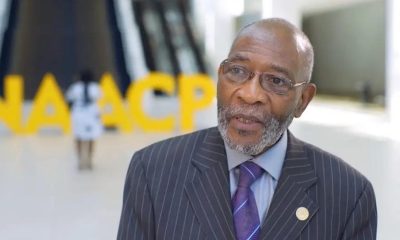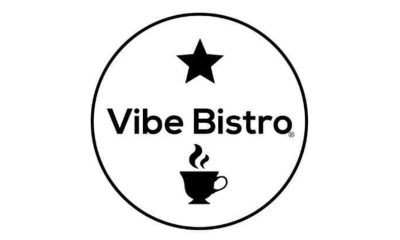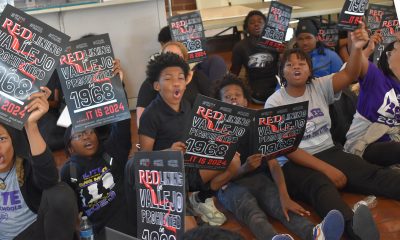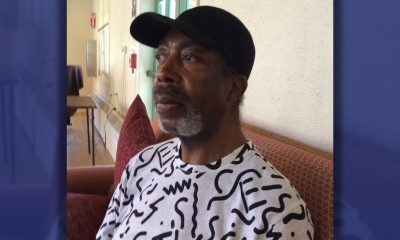Business
Mayor Breed, Supervisor Mar Launch Grant to Support Storefronts Impacted by Vandalism
Up to $2,000 in financial relief available to repair storefront vandalism at neighborhood businesses
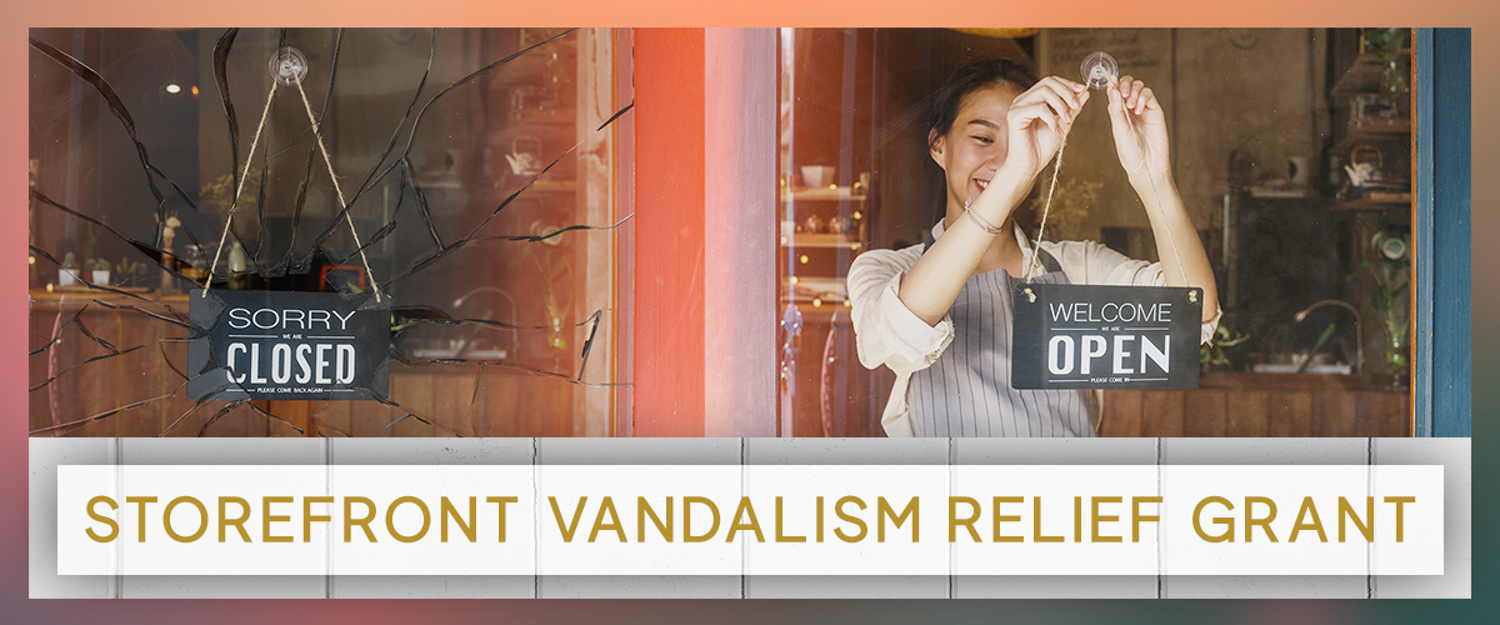
Mayor London N. Breed and Supervisor Gordon Mar announced Wednesday the launch of the Storefront Vandalism Relief Grant program, which provides up to $2,000 in financial relief to restore and repair damages from vandalism at neighborhood storefronts. The program launches during a time when many small businesses are recovering from the impacts of the COVID-19 pandemic.
“Opening and operating a successful small business in San Francisco was becoming increasingly difficult, and the pandemic has made it that much harder,” said Breed. “It has never been more critical for us to provide support to our small businesses in every way that we can, which not only means making it easier to open and operate a small business, but also providing relief when they face challenges. With the launch of the Storefront Vandalism Relief Grant, we are letting our small business community know that we have their back and will fight to ensure that they can continue operating for years to come.”
The Storefront Vandalism Relief Grant provides financial relief to restore small businesses impacted by deliberate actions that result in the destruction or damages of storefronts. This program will offer either $1,000 or $2,000, depending on the total cost incurred to repair physical damages. The $1 million program is designed to serve more than 500 small businesses with gross revenue of less than $8 million that can provide proof of damages from vandalism incurred since July 1, 2020.
The fund will directly support small businesses with financial relief in the aftermath of a crime to restore the harm done. The fund will also allow small businesses to make improvements that enhance security and prevent crime. This includes replacement locks, a new security gate, fixing an alarm system, adding new lighting, replacing windows, etchings on windows, and many others. Improvements are available on a first-come-first-serve basis, based on fund availability.
The Storefront Vandalism Relief Grant is one tool in preventing crime and improving safety in neighborhood commercial corridors. The Office of Economic and Workforce Development (OEWD) also funds programs to help small businesses and neighborhood organizations improve safety through ambassadors and activations to increase foot traffic and community patrols. The fund is not meant to replace the loss of stolen goods and does not include damage to shared spaces.
“During the pandemic, we’ve seen a surge in burglaries and vandalism in every neighborhood targeting small businesses already struggling with unprecedented economic challenges. As we work to prevent these crimes and strengthen safety on our commercial corridors, we must also respond immediately to provide relief to mom-and-pop businesses with direct and tangible support as they recover from these incidents,” said Mar.
“Following requests from businesses in the Sunset, I worked with Mayor Breed and the Office of Economic and Workforce Development to create the Storefront Vandalism Relief Grant and secured an initial $1 million funding allocation,” said Mar. “The fund will provide financial relief to small businesses in the aftermath of a crime to restore the harm done, including direct costs of property damage or getting a replacement lock or new security measures.”
To apply, eligible businesses are asked to provide receipts, photos of damages and furnish a report from the San Francisco Police Department or from 311 in the case of graffiti. Applications can be found by visiting oewd.org/VandalismRelief.
“On February 26 at 4:00 a.m., a burglar managed to break into my small business without activating the alarm. An hour later an opportunistic looter came into my store and stole additional merchandise. Small businesses are already hurting hard from the pandemic and these crimes are a gut punch to small businesses,” said Michael Hsu, owner of Footprint on Taraval.
“Since hearing about the Storefront Vandalism Relief Grant, I’ve put in my application to get up to $2,000 to help provide some relief to my business. We need more programs like this to support small businesses in our neighborhood that are struggling from being victims of burglary and vandalism. I’m thankful for our city leaders for initiating this program. Together with the community and leaders, we will get through these tough times.”
“Since the pandemic, I have heard so many stories from small businesses that have been burglarized or vandalized. As a small business owner, myself, I feel and understand their pain and loss,” said Albert Chow, president of People of the Parkside Sunset, a Taraval merchants and residents association. “The Storefront Vandalism Relief Grant is a safety net that is critical to ensuring that our small business owners are able to recover.”
Since the beginning of the pandemic, San Francisco has provided immediate and ongoing support for small businesses, including making available more than $52.8 million in grants and loans to support more than 3,000 small businesses, in addition to tens of millions of dollars in fee and tax deferrals, and assistance applying for state and federal funding. This includes legislation introduced and signed by Mayor Breed to waive $5 million in fees and taxes for entertainment and nightlife venues and small restaurants.
“As we reopen and rebuild, many of our small businesses continue to struggle to make ends meet. These challenges can feel almost insurmountable when small businesses also become victims of vandalism” said Kate Sofis, director of the Office of Economic and Workforce Development. “San Francisco’s Storefront Vandalism Relief Grant will help alleviate the financial hardship caused by deliberate acts of damage to property. It is one of many tools the City has to support our business community and the vibrancy of our neighborhoods as we work together towards economic recovery.”
“The San Francisco Post’s coverage of local news in San Francisco County is supported by the Ethnic Media Sustainability Initiative, a program created by California Black Media and Ethnic Media Services to support community newspapers across California.”
Bay Area
Mayor Breed Proposes Waiving City Fees for Night Markets, Block Parties, Farmers’ Markets, Other Outdoor Community Events
Mayor London N. Breed introduced legislation on April 26 to encourage and expand outdoor community events. The first will waive City fees for certain events, making them less costly to produce. The second will simplify the health permitting for special event food vendors through the creation of an annual permit. Both pieces of legislation are part of the Mayor’s broader initiative to bring vibrancy and entertainment to San Francisco’s public right of ways and spaces.

Mayor’s Press Office
Mayor London N. Breed introduced legislation on April 26 to encourage and expand outdoor community events.
The first will waive City fees for certain events, making them less costly to produce. The second will simplify the health permitting for special event food vendors through the creation of an annual permit. Both pieces of legislation are part of the Mayor’s broader initiative to bring vibrancy and entertainment to San Francisco’s public right of ways and spaces.
Outdoor community events are integral to San Francisco’s vibrant culture and sense of community. These events include night markets, neighborhood block parties and farmers markets, and bolster the City’s economy by supporting local businesses and attracting tourists eager to experience San Francisco’s unique charm and food scene.
They offer residents, workers and visitors, opportunities to engage with local artists, musicians, and food vendors while enjoying the San Francisco’s stunning outdoor spaces and commercial corridors.
The legislation will allow for more and new community gatherings and for local food vendors to benefit from the City’s revitalization.
“San Francisco is alive when our streets are filled with festivals, markets, and community events,” said Breed. “As a city we can cut fees and streamline rules so our communities can bring joy and excitement into our streets and help revitalize San Francisco.”
Fee Waiver Legislation
The events that can take advantage of the new fee waivers are those that are free and open to the public, occupy three or fewer city blocks, take place between 8 a.m. and 10 p.m., and have the appropriate permitting from the ISCOTT and the Entertainment Commission.
The applicant must be a San Francisco based non-profit, small business, Community Benefit District, Business Improvement District, or a neighborhood or merchant association. Fees eligible for waiver include any application, permit, and inspection/staffing fees from San Francisco Municipal Transportation Agency, Department of Public Health, Fire Department, Entertainment Commission, and Police Department.
Currently, it can cost roughly anywhere between $500-$10,000 to obtain permits for organized events or fairs, depending on its size and scope. Organizations and businesses are limited to a maximum of 12 events in one calendar year for which they can receive these fee waivers.
Food Vendor Streamlining Legislation
The second piece of legislation introduced will help special event food vendors easily participate in multiple events throughout the year with a new, cost-effective annual food permit. Food vendors who participate in multiple events at multiple locations throughout the year will no longer need to obtain a separate permit for each event. Instead, special event food vendors will be able to apply and pay for a single annual permit all at once.
“Many successful food businesses either begin as pop-up vendors or participate in special events to grow their business,” says Katy Tang, Director of the Office of Small Business. “Giving them the option for an annual special event food permit saves them time and money.”
Currently, food vendors are required to get a Temporary Food Facility (TFF) permit from the Department of Public Health (DPH) in order to participate in a special event, among permits from other departments.
Currently, each special event requires a new permit from DPH ranging from $124-$244, depending on the type of food being prepared and sold. Last year, DPH issued over 1,500 individual TFF permits. With the new annual permit, food vendors selling at more than four to six events each year will benefit from hundreds of dollars in savings and time saved from fewer bureaucratic processes.
“This legislation is a step in the right direction to make it easier for food vendors like me to participate in citywide events,” said Dontaye Ball, owner of Gumbo Social. “It saves on time, money and makes it more effective. It also creates a level of equity.”
Bay Area
Faces Around the Bay: Sidney Carey
Sidney Carey was born in Dallas, Texas. He moved with his family to West Oakland as a baby. His sister is deceased; one brother lives in Oakland. Carey was the Choir Director at Trinity Missionary Baptist Church for 18 years.
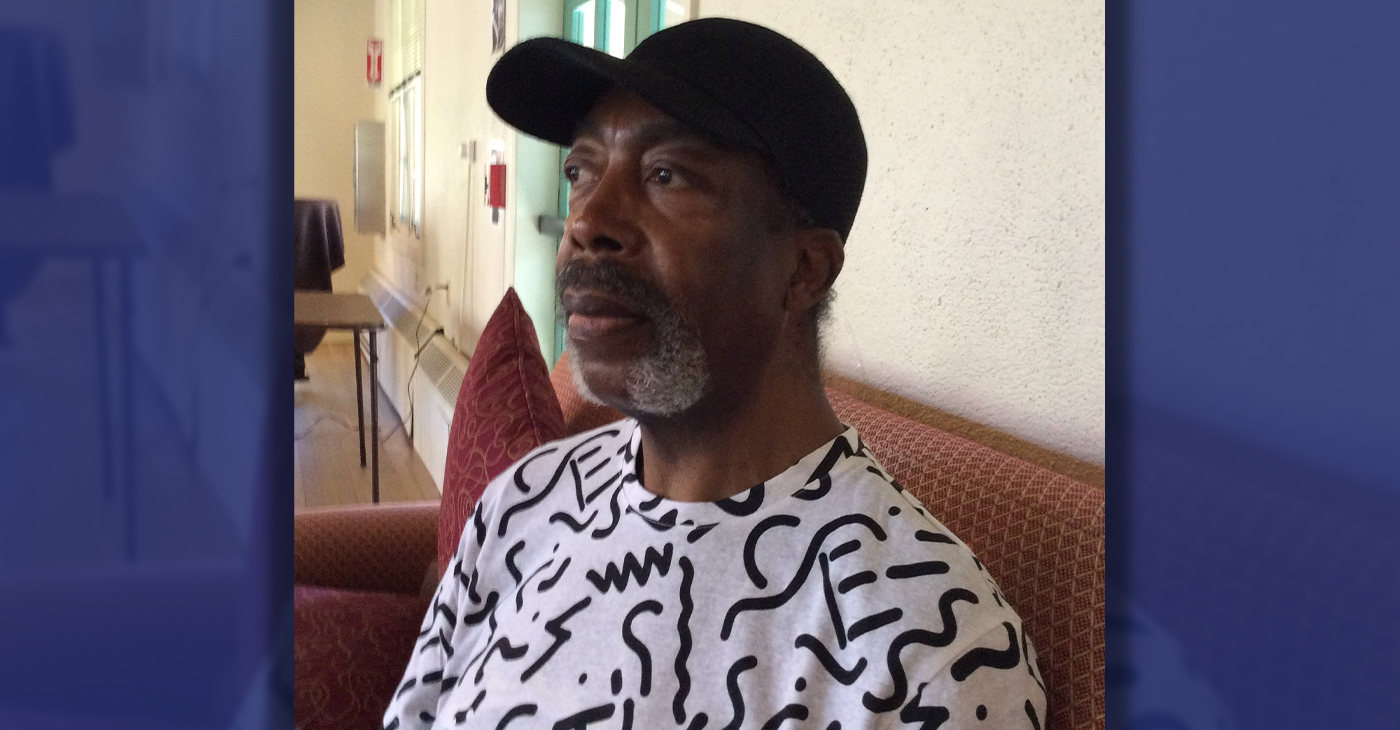
By Barbara Fluhrer
Sidney Carey was born in Dallas, Texas. He moved with his family to West Oakland as a baby. His sister is deceased; one brother lives in Oakland.
Carey was the Choir Director at Trinity Missionary Baptist Church for 18 years.
He graduated from McClymonds High with a scholarship in cosmetology and was the first African American to complete a nine-month course at the first Black Beauty School in Oakland: Charm Beauty College.
He earned his License, and then attended U.C., earning a secondary teaching credential. With his Instructors License, he went on to teach at Laney College, San Mateo College, Skyline and Universal Beauty College in Pinole, among others.
Carey was the first African American hair stylist at Joseph and I. Magnin department store in Oakland and in San Francisco, where he managed the hair stylist department, Shear Heaven.
In 2009, he quit teaching and was diagnosed with Congestive Heart Failure. He was 60 and “too old for a heart transplant”. His doctors at California Pacific Medical Center (CPMC) went to court and fought successfully for his right to receive a transplant. One day, he received a call from CPMC, “Be here in one hour.” He underwent a transplant with a heart from a 25-year- old man in Vienna, Austria
Two years later, Carey resumed teaching at Laney College, finally retiring in 2012.
Now, he’s slowed down and comfortable in a Senior Residence in Berkeley, but still manages to fit his 6/4” frame in his 2002 Toyota and drive to family gatherings in Oakland and San Leandro and an occasional Four Seasons Arts concert.
He does his own shopping and cooking and uses Para Transit to keep constant doctor appointments while keeping up with anti-rejection meds. He often travels with doctors as a model of a successful heart-transplant plant recipient: 14 years.
Carey says, “I’m blessed” and, to the youth, “Don’t give up on your dreams!”
Business
Maximizing Your Bank Branch Experience
In a world of online tools that let you make banking transactions with the touch of a button, the idea of visiting a branch might seem unnecessary. However, if you haven’t visited your local branch recently, you might be surprised by what it has to offer. Your branch is much more than a place to deposit and withdraw money – it can offer the opportunity to build valuable relationships with people who can help you achieve financial independence.

Sponsored by JPMorgan Chase & Co.
In a world of online tools that let you make banking transactions with the touch of a button, the idea of visiting a branch might seem unnecessary.
However, if you haven’t visited your local branch recently, you might be surprised by what it has to offer. Your branch is much more than a place to deposit and withdraw money – it can offer the opportunity to build valuable relationships with people who can help you achieve financial independence.
Diedra Porché, Head of Community and Business Development at Chase, talks about how the bank model has evolved to maximize the branch experience for customers; how connecting with your local branch team can help you think differently about money and investing for your future.
How can a customer feel connected to a bank branch?
I love that question because we ask ourselves the same thing every day. Being part of the community means meeting with local leaders to find out what they need from us and then designing our branches around that. For example, at some of our community branches we have what we call a living room where we can host financial workshops, small business pop-up shops or nonprofit organization meetings. We also hire locally. You feel much more connected talking about financial aspirations with people from your community who went to the same high school, place of worship or maybe frequented the same recreation center down the street when they grew up.
How can I build a relationship with my bank?
Customers should feel comfortable sharing their goals, needs and wants with their banker. Also, it helps to remember the Community Manager is there to help solve your finance challenges and build a roadmap for success. You might have a short-term or long-term goal to open a business, build your credit, become debt-free, buy a home, or save for retirement, and our community team can help. At Chase, we strive to make dreams possible for everyone, everywhere, every day. Your financial future starts with building those relationships.
How can customers change negative perceptions they have about managing their money?
Far too often, customers are intimidated when they visit a bank. Our goal is to demystify banking and money myths empowering people to make the right decisions. For example, a big myth is assuming you need a lot of money to have a bank account. You don’t! Another myth is you need to carry a balance on your credit card to build credit — actively using your credit card can demonstrate that you can use credit responsibly but carrying a balance won’t necessarily improve your credit score. Finally, understanding mobile and online banking safety is key. There are so many safeguards and protections in place to guard your personal information and funds.
What’s an easy step one can take to shift their financial behavior right now?
Cultivating self-awareness is a good first step. Start by taking inventory of your spending. Be honest with yourself about what you need and what you want. Too often, people confuse the two, which leads to bad decisions. Rent is something you need to pay. An extra pair of shoes is something you may want but before you buy them ask yourself if that’s the best use of your hard-earned money. Too often, our beliefs and our fears shape our financial realities. If any of those beliefs are limiting your financial behavior, it’s important to question and examine them, and then decide you’re open to learning something different.
What’s one perception about banking that you’d like to change?
I think folks are surprised there are so many resources available and accessible both at our branches and online, it’s always a good idea to visit a nearby branch and speak to a Community Manager or banker. Outside of what we offer in-branch, our teams also work with local neighborhood partners who provide a variety of services to support the community, businesses and residents. I received a unique piece of feedback from an employee who started with the bank and had lived in the same community his whole life. When he visited his local community branch, he said, “Diedra, when I walked in, I felt dignified.” Every time I recount that story, it warms my heart because that’s what we want — we want our centers to belong to the community.
-

 Community3 weeks ago
Community3 weeks agoFinancial Assistance Bill for Descendants of Enslaved Persons to Help Them Purchase, Own, or Maintain a Home
-

 City Government5 days ago
City Government5 days agoCourt Throws Out Law That Allowed Californians to Build Duplexes, Triplexes and RDUs on Their Properties
-

 Business3 weeks ago
Business3 weeks agoV.P. Kamala Harris: Americans With Criminal Records Will Soon Be Eligible for SBA Loans
-

 Activism2 weeks ago
Activism2 weeks agoOakland Post: Week of April 24 – 30, 2024
-

 Activism4 weeks ago
Activism4 weeks agoOakland Post: Week of April 10 – 16, 2024
-

 Community3 weeks ago
Community3 weeks agoAG Bonta Says Oakland School Leaders Should Comply with State Laws to Avoid ‘Disparate Harm’ When Closing or Merging Schools
-

 Community3 weeks ago
Community3 weeks agoRichmond Nonprofit Helps Ex-Felons Get Back on Their Feet
-

 Community3 weeks ago
Community3 weeks agoOakland WNBA Player to be Inducted Into Hall of Fame

